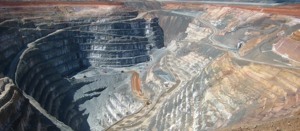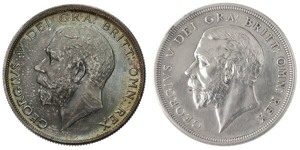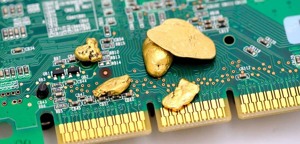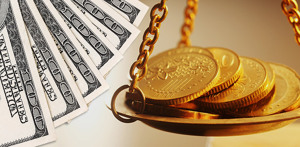Tavex uses cookies to ensure website functionality and improve your user experience. Collecting data from cookies helps us provide the best experience for you, keeps your account secure and allows us to personalise advert content. You can find out more in our cookie policy.
Please select what cookies you allow us to use
Cookies are small files of letters and digits downloaded and saved on your computer or another device (for instance, a mobile phone, a tablet) and saved in your browser while you visit a website. They can be used to track the pages you visit on the website, save the information you enter or remember your preferences such as language settings as long as you’re browsing the website.
| Cookie name | Cookie description | Cookie duration |
|---|---|---|
| tavex_cookie_consent | Stores cookie consent options selected | 60 weeks |
| tavex_customer | Tavex customer ID | 30 days |
| wp-wpml_current_language | Stores selected language | 1 day |
| AWSALB | AWS ALB sticky session cookie | 6 days |
| AWSALBCORS | AWS ALB sticky session cookie | 6 days |
| NO_CACHE | Used to disable page caching | 1 day |
| PHPSESSID | Identifier for PHP session | Session |
| latest_news | Helps to keep notifications relevant by storing the latest news shown | 29 days |
| latest_news_flash | Helps to keep notifications relevant by storing the latest news shown | 29 days |
| tavex_recently_viewed_products | List of recently viewed products | 1 day |
| tavex_compare_amount | Number of items in product comparison view | 1 day |
| Cookie name | Cookie description | Cookie duration |
|---|---|---|
| chart-widget-tab-*-*-* | Remembers last chart options (i.e currency, time period, etc) | 29 days |
| archive_layout | Stores selected product layout on category pages | 1 day |
| Cookie name | Cookie description | Cookie duration |
|---|---|---|
| cartstack.com-* | Used for tracking abandoned shopping carts | 1 year |
| _omappvp | Used by OptinMonster for determining new vs. returning visitors. Expires in 11 years | 11 years |
| _omappvs | Used by OptinMonster for determining when a new visitor becomes a returning visitor | Session |
| om* | Used by OptinMonster to track interactions with campaigns | Persistent |
| Cookie name | Cookie description | Cookie duration |
|---|---|---|
| _ga | Used to distinguish users | 2 years |
| _gid | Used to distinguish users | 24 hours |
| _ga_* | Used to persist session state | 2 years |
| _gac_* | Contains campaign related information | 90 days |
| _gat_gtag_* | Used to throttle request rate | 1 minute |
| _fbc | Facebook advertisement cookie | 2 years |
| _fbp | Facebook cookie for distinguishing unique users | 2 years |
Understanding the Value Difference Between Gold and Silver

Understanding why silver is less valuable than gold is a journey through history, economics, and science. Both metals have captivated human interest for centuries, but the values of gold and silver have diverged significantly.
This article explores the myriad factors contributing to this value difference.
Historical and Cultural Significance

Gold’s historical significance is unparalleled.
In ancient Egypt, golds historical context was synonymous with the gods, immortality, and the sun. Pharaohs and temples were adorned with gold, and it was a key element in royal burials. Similarly, in ancient Greek and Roman cultures, gold symbolised wealth and status. This deep-rooted historical reverence for gold has cemented its high value throughout centuries.
Silver, while also valued historically, was seen as more commonplace.
In cultures like the Roman Empire and medieval Europe, it was used for currency and everyday objects, making it more familiar and less exclusive than gold. This historical perspective, where silver was seen as the ‘people’s metal’ compared to the ‘divine’ gold, contributes to its lower valuation in comparison.
Rarity and Abundance
Gold’s rarity cannot be overstated.
It is estimated that all the gold ever mined would fit into a cube with sides of just 22 meters

(Source: World Gold Council)
Total above-ground stocks (end of 2022): 208,874 tonnes
- Jewellery – 95,547t, 46%
- Bars and coins (including gold backed ETFs) – 46,517t, 22%
- Central banks – 35,715t, 17%
- Other – 31,096t, 15%
- Proven reserves – 52,000t
This extreme scarcity is a fundamental reason for its high value and its high bullion price. The geological processes that create gold deposits are rare and occur over millions of years, making gold much less common than silver.
Silver, while rare in its own right, is far more abundant than gold. Its larger deposits and wider geographic distribution make it more readily available. This abundance naturally translates to a lower market value compared to gold.
Mining and Extraction Costs

Gold mining involves extensive and costly exploration, extraction, and processing methods.
Often found in remote locations, the extraction of gold requires significant investment in both resources and labour. The environmental impact of gold mining is also a considerable factor, with the need for sustainable and responsible mining practices adding to the complexity and cost.
Silver mining, while still challenging, is generally less resource-intensive than gold mining. Modern technological advancements have made silver extraction more efficient and cost-effective. However, this economic feasibility does not translate to a higher market value due to the metal’s greater abundance.
Physical and Chemical Properties

Gold’s unique properties significantly contribute to its value. Its non-reactive nature means it does not oxidise or tarnish, maintaining its luster indefinitely. This quality, combined with its ductility and malleability, makes gold ideal for crafting intricate jewellery and ornate artefacts, further enhancing its appeal and driving up this precious metals price.
Silver is the most reflective and conductive metal, making it valuable in various technological and industrial applications. However, its tendency to tarnish and lower durability compared to gold affects its desirability and, consequently, its value in the market for decorative purposes.
Industrial Usage

While gold’s industrial use is limited compared to silver, its specific applications in high-end electronics, dentistry, and aerospace are significant. Gold’s corrosion resistance and excellent conductivity make it valuable in these specialised fields.
Silver’s industrial demand is vast, ranging from electronics to solar energy and medical applications
Its antibacterial properties make it valuable in medical equipment and water purification systems. Despite its extensive industrial use, silver’s value is tempered by its relative abundance and lower market perception compared to gold.
Investment and Economic Factors
In times of economic uncertainty, investors often turn to gold as a stable asset rather than putting their trust in the stock market or central banks.
This behaviour is rooted in historical patterns where gold has retained its value or even appreciated during economic downturns. It is seen as a hedge against inflation and currency devaluation, with gold bars and coins being a safe investment option.
 In Stock
In Stock
Silver is also considered a valuable investment asset but is more volatile than gold. It is often affected by both industrial demand and investor sentiment, leading to more significant price fluctuations.
While it offers investment opportunities, it does not have the same level of financial safe haven status as gold, when it comes to economic instability.
Market Perception and Investor Behaviour

The market perception of gold as a symbol of wealth and stability heavily influences its pricing. The value of gold as a perception, built over millennia, continues to drive investor behaviour, making gold a preferred choice for wealth preservation and a status symbol.
Silver, while respected as an investment and industrial metal, does not carry the same historical and cultural weight as gold. Its pricing is more influenced by industrial demand and less by investment demand, which often leads to a lower valuation in the investment market.
Key Takeaways
The value of silver is lower than gold is due to historical significance, scarcity, mining costs, physical and chemical attributes, industrial demand, and market perceptions.
While current market prices reveal a considerable value gap between these two precious metals, long-term developments in technology, economic situations, and cultural attitudes could potentially alter their valuation.
The continued interest with gold bullion and silver ensures that their values will evolve. It will be interesting to see the changes in gold and silver prices in the London Bullion Market over time and see how the supply and demand for these precious metals changes, altering the amount of individuals investing in gold and silver.

















